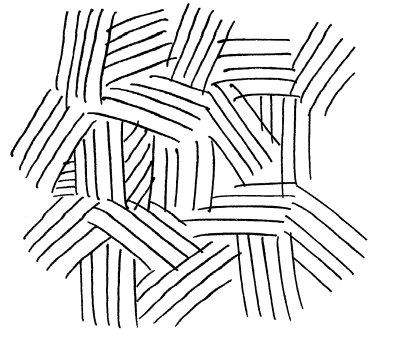hunt 512 nib review

The Hunt 512 globe nib is a popular nib that you'll find in many Speedball/Hunt sets. Its ease of use, combined with the fact that it isn't very flexible, and its ablility to make curves and circles to some degree means this is a nib I'd readily recommend to beginners.
Even after years of trying out different nibs, some which are similar to (and objectively better than) this one, I still find myself pulling out the 512 often. I like it for general illustration, hatching, and for times when I want a bit of rigidity, but not too much rigidity. Another advantage for me is that this nib is a bit bolder than some other globe nibs, defaulting to a thicker line than, say, a Nikko or Tachikawa spoon nib. I like that about it.
ink capacity

This is my capacity test, done horizontally on an A5 sheet of paper. This test is appropximately 5.8" across.
Its capacity is fine for most illustrations, but it can be used with a nib cage if needed to prolong the drawing time without having to re-dip. It is pretty durable, unlike some of the more flexible nibs out there. It fits well into a standard Speedball holder, but holders with more rounded inserts may have trouble with this one because it's a bit flat.
I couldn't get this to fit into my Tachikawa holders, for example.
flexibility

Not the most flexible nib out there, as I mentioned before.
Some thicker lines can be achieved, but that is with substantial pressure applied to the nib. Luckily this is a durable nib, but I don’t recommend bearing down hard all the time on your nibs- it shortens their lifespan.
The 512 snaps back pretty well to its original thickness, as you can see.
In the final test, I wanted to see how far I could take a line across the page (5.8”) with varying levels of pressure before it ran out of ink. The nib made it on the light and medium pressure tests, and just barely didn’t finish on the heavy pressure test. But like I said, you can always use a nib cage to extend its capacity.
hatching

Here is a test where I do a cluster of single-line hatching to see how the nib performs.
I personally love this nib for slightly thicker hatching effects. It’s pretty stable and firm, so it won’t swell and create dynamic, brush-like strokes.
I highly recommend the 512 for even, consistent hatching.
scribbling

On this test, I scribbled back and forth with the nib quickly to see how it handled.
Many nibs have trouble with this test, especially round/tubular nibs.
The 512 does very well here, with very little- if any- noticeable skipping or catching on the paper.
If you like to scribble back and forth, this is a good dip nib to try!
curlycues

In this test, I create curlycues as quickly as I can in order to see how the nib will handle it.
Many nibs cannot make curlies, swoops, circles, or scumbles very well. This is especially true of very sharp, or tubular/rounded nibs.
The 512 can make curlycues, but caution must be taken to be sure not to apply too much pressure, or you'll get skipping.
Once I applied less pressure with the nib, it performed better when I scumbled in the other direction.
I think this nib can handle curls decently- it's not the best, but it's far from the worst! Just keep an eye on your pressure.
conclusion
If you’re new to the world of dip pen nibs, I recommend this as a nice, accesible beginner nib. It is firm, but still able to flex with pressure. It’s also pretty versatile in the lines it can make, and has a decent ink capacity. The 512 is very easy to find in art supply stores or online, and it is quite durable, so should last you a while.
(This testing was done with FW Acrylic ink in black on Deleter Kent Paper, A5 size sheet.)
